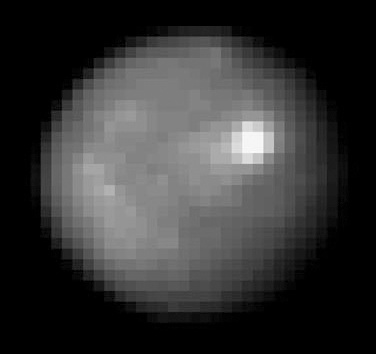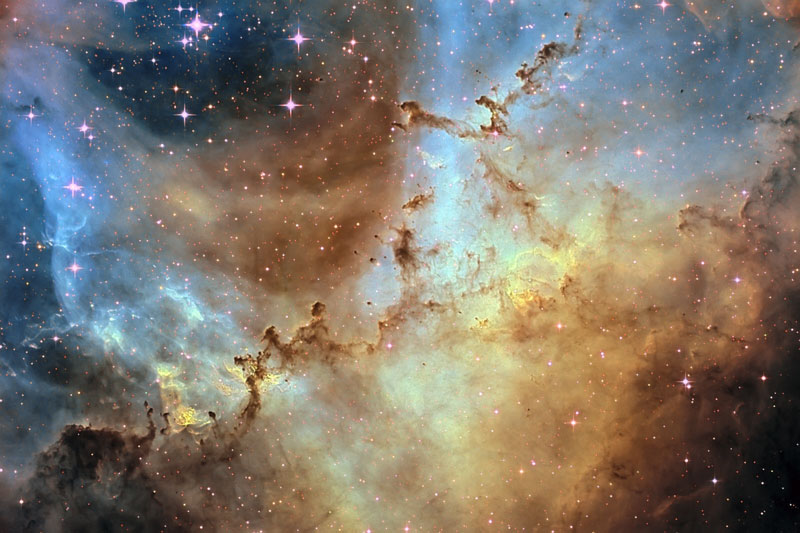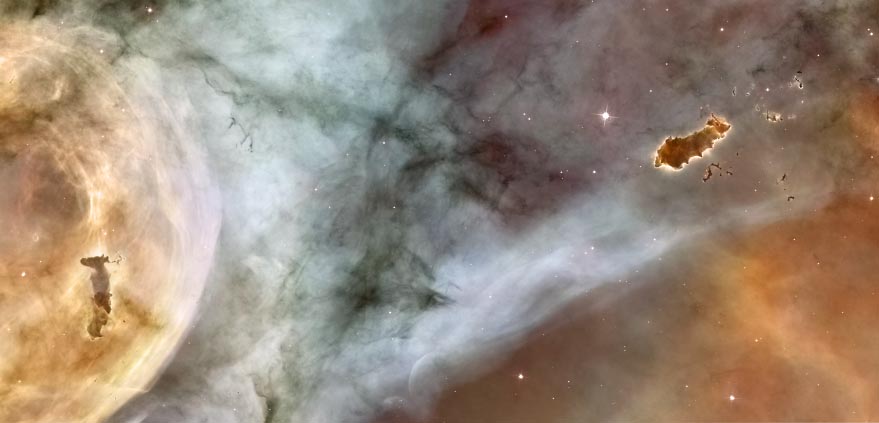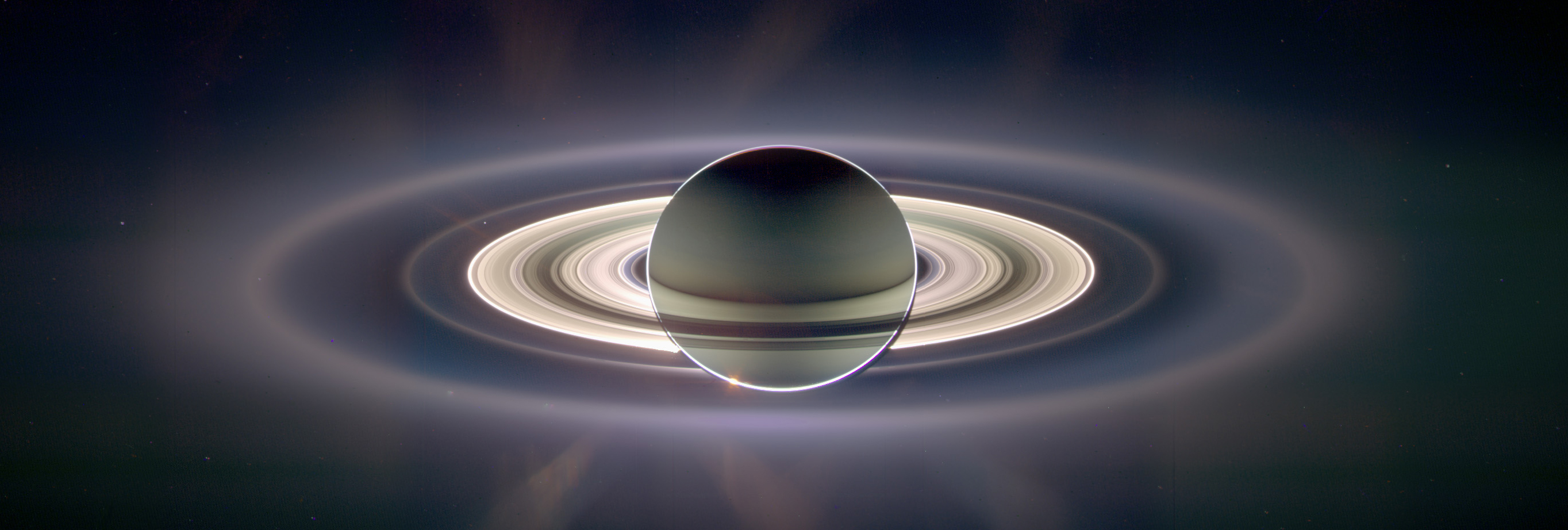Elsewhere in the Universe: Small worlds seem to be in the news a lot today. The newest images from the dwarf planet Ceres have come back form the Dawn mission:
| Above: A GIF of eres rotating back and forth. It makes some of the details more obvious. And it looks kinda funny. Sincere thanks to Toma B of unmannedspaceflighyt.com. |
See the latest video of the dwarf planet here.
A few things jump out from this (now twice as clear as Hubble) set of images: The bright spot is still mysterious, but now we can see there are other, smaller bright spots further around the dwarf planet. The big bright spot is definitely surrounded by something darker - it could be shadows from surrounding mountains, although I'm not sure that the sun is at the right angle for that. There are definitely depressions that look like craters, most visible near the edge of the night side - if the bright spot is a crater which has punched into a layer of subsurface ice (still my theory) then I wonder why the other craters haven't? There are what look, to me, to be mountains winding in unbroken lines across hundreds of kilometres of the surface. That must be pretty spectacular from the surface! Maybe it's just the low resolution (20 km / pixel) but somehow the surface looks rippled - what do you think?
 |
| Above: This is one of the Goldstone antennas, but it's mainly here because its pretty. |
Above: The asteroid, and it's weensy moon. Two things are surprising here; that such a tiny world has become more-or-less-round, and that so may asteroids are being found to have moons.
Radio observatories like Goldstone have made a lot of discoveries that would have other wise needed a space mission, like the ice in the eternally dark craters on Mercury:
| Above: Images of the ice on Mercury - a big discovery considering how scorchingly close to the Sun Mercury is - taken from Earth by the Goldstone radar. Courtesy of NASA. |
Lastly another small world,, the 100 km wide 'mega comet' Chiron, has thrown up a surprise: It has a system of rings! This would make it the only known comet to have rings - it's just a pity this world is even further away that Saturn, so it'll be a long time before we get a decent image of them....
 |
| Above: An artists impression of Chiron, without rings - well there's a project for Many worlds art... |
Go to Congress and stand up for exploration!
Another ancient habitable environment on Mars.
Latest news on the fountains of Enceladus.
Meteorite mineral named after beer is a time capsule.
Experimental 'Light Sail' space drive to fly soon.
New network of Earth observing Satellites
New satellite network to expand the internet.
Big International Space Station robot unloads experiments from recent cargo run

























.png/revision/latest?cb=20130303111526)






